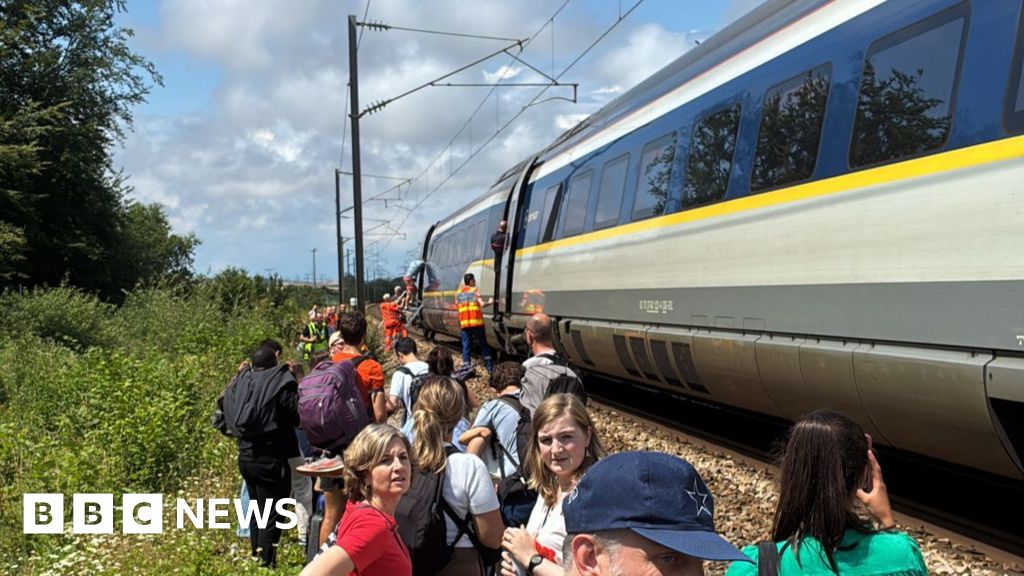Eurostar Breakdown Strands Passengers in Northern France: A Chronicle of Delay, Discomfort, and Disappointment
A Eurostar train bound for London St Pancras International was brought to a standstill in northern France, leaving passengers stranded for nearly four hours and sparking a wave of frustration and complaints. The incident, which occurred on a train originating from Brussels, highlights the potential vulnerabilities of international high-speed rail travel and raises questions about Eurostar’s contingency planning and communication strategies.
The Incident Unfolds: A Breakdown and a Long Wait
The train, which departed Brussels at 08:52 local time (07:52 BST) on what was intended to be a swift two-hour journey, encountered difficulties just ten minutes outside of Calais. Passengers reported a complete engine failure, a situation corroborated by accounts of “some electrical failing.” The delay quickly escalated as the train became immobile, leaving hundreds of passengers in a state of uncertainty.
One passenger, James Grierson, described the scene as one of growing frustration, with passengers stranded on the train without air conditioning. As the hours passed, the situation deteriorated, prompting the arrival of emergency services and local rescue teams. These responders distributed bottled water to the increasingly distressed passengers, a gesture that offered a small measure of relief amidst the sweltering conditions.
The situation wasn’t helped by the lack of clear communication from Eurostar. While the company initially posted messages on social media urging passengers to remain in their seats and await a replacement train, updates were infrequent and details scarce. This lack of transparency fueled anxiety and dissatisfaction among those affected.
Passenger Accounts: Toilets, Temperature and Tension
The conditions inside the stranded train quickly became uncomfortable, and then, reportedly, unsanitary. Lidia Aviles, a 38-year-old passenger from Brussels, recounted that passengers were initially barred from leaving the train due to security concerns related to proximity to the railway tracks. This restriction compounded the problems, as essential facilities, including the toilets, ceased to function. Aviles emphasized the particular hardship this posed for families with babies and elderly travelers.
Social media platforms became a conduit for passenger grievances. Numerous individuals took to X (formerly Twitter) to voice their complaints, citing issues such as the lack of air conditioning, overflowing toilets, and the general absence of timely and informative updates. Eurostar’s responses to these complaints, while apologetic, often lacked the concrete information passengers desperately sought.
The Evacuation: A Step Towards Resolution, But Questions Remain
After nearly four hours of waiting, passengers were finally evacuated from the broken-down train. Photographs from the scene depicted dozens of people standing outside the carriages, surrounded by rescue workers in high-visibility jackets. While the evacuation marked a step towards resolving the immediate crisis, it also underscored the severity of the situation and the length of time passengers had been left waiting.
Mr. Grierson noted that there was “no sign” of a replacement train to collect them at the time of the evacuation, adding to the sense of disarray and leaving passengers to wonder about their onward travel arrangements. While Eurostar had claimed that a replacement train was being arranged, the lack of its visible presence at the evacuation site raised further questions about the logistics of the operation.
Analysis: Examining the Breakdown and Its Impact
This incident raises several important points about the reliability and resilience of international high-speed rail travel, specifically within the Eurostar network.
- Contingency Planning: The length of the delay suggests potential shortcomings in Eurostar’s contingency planning. The time taken to arrange the evacuation and (apparently) the lack of an immediately available replacement train point to a need for more robust and readily deployable backup plans for incidents of this nature.
- Communication Protocols: The communication breakdown experienced by passengers highlights the importance of clear, consistent, and timely information dissemination during disruptions. Relying solely on social media responses is insufficient; a proactive and multi-channel communication strategy is crucial to manage passenger expectations and mitigate anxiety.
- Infrastructure Resilience: While the exact cause of the breakdown remains unclear, it underscores the need for rigorous maintenance and monitoring of the infrastructure that supports high-speed rail travel. Preventative measures are essential to minimize the risk of similar incidents occurring in the future.
- Passenger Welfare: The reported conditions inside the train – lack of air conditioning and non-functioning toilets – raise concerns about passenger welfare during prolonged delays. While Eurostar’s initial priority may have been security, it’s crucial to ensure that passengers’ basic needs are met during such situations, including providing access to sanitation and a comfortable environment.
Beyond the Incident: A Broader Perspective on Rail Travel Disruptions
Train travel, while generally a reliable mode of transportation, is not immune to disruptions. Technical failures, weather conditions, and unforeseen events can all lead to delays and cancellations. However, the impact of these disruptions can be minimized through effective planning, communication, and passenger support.
The Eurostar incident serves as a reminder of the importance of the following:
- Investing in Robust Infrastructure: Regular maintenance and upgrades of rail infrastructure are essential to prevent breakdowns and ensure the safe and efficient operation of train services.
- Developing Comprehensive Contingency Plans: Rail operators should have well-defined contingency plans in place to address various types of disruptions, including technical failures, weather events, and security incidents. These plans should outline procedures for evacuating passengers, providing alternative transportation, and communicating with affected individuals.
- Prioritizing Passenger Communication: Clear and timely communication is crucial during disruptions. Rail operators should use a variety of channels, including announcements, social media, and mobile apps, to keep passengers informed of the situation and provide updates on estimated departure times and alternative travel arrangements.
- Providing Adequate Passenger Support: During prolonged delays, rail operators should provide passengers with access to essential amenities, such as food, water, and restroom facilities. They should also have staff available to answer questions and provide assistance.
- Learning from Incidents: It’s vital that rail operators conduct thorough investigations following disruptions to identify the root causes and implement measures to prevent similar incidents from occurring in the future.
Conclusion: A Call for Improved Resilience and Communication
The Eurostar breakdown in northern France exposed vulnerabilities in the system and highlighted the need for improved contingency planning, communication strategies, and infrastructure resilience. While the incident was undoubtedly a frustrating experience for those affected, it also presents an opportunity for Eurostar and other rail operators to learn from the experience and enhance their services.
Ultimately, the goal should be to ensure that rail travel remains a reliable, comfortable, and safe mode of transportation for all passengers. This requires a commitment to investing in infrastructure, developing comprehensive contingency plans, prioritizing passenger communication, and providing adequate support during disruptions. By taking these steps, rail operators can minimize the impact of disruptions and maintain the trust and confidence of their passengers. The lack of air conditioning, coupled with delays, creates a perfect storm of issues that are hard to overcome without a swift plan of action. The Eurostar brand relies on comfort and speed; these factors were compromised by a technical issue which required a swift remedy.





